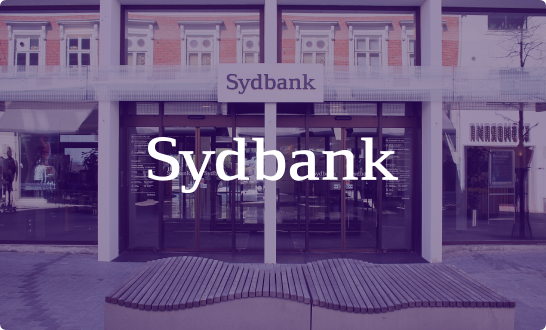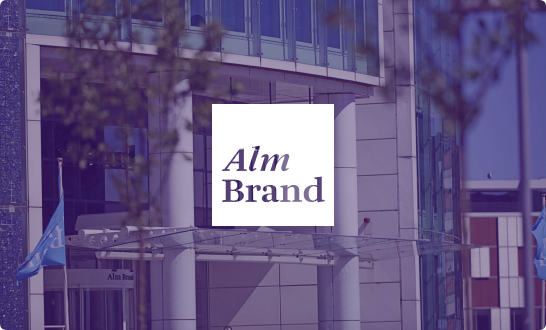But how can you, as a company, bring biological answers and find solutions for your consumers in an increasingly demanding marketplace?
You ask them about their needs and aspirations, of course.

Rethinking how to address health and solve challenges
Novozymes has been dedicated to enzymes and microbes for more than 70 years, working to solve biological problems and make a difference in the world.
But with the appearance of new health paradigms such as stress-related diseases, the company needed to rethink how to address health and solve society’s modern challenges. As a first step to tackle these new paradigms, Novozymes wanted to uncover more about its customers and their brand perception by combining customer insights with technology, to take those insights to adapt the brand.
But, according to Ulrich Irgens, General Manager of Novozymes OneHealth, the conclusion was not what they were anticipating…
Understanding the surroundings in the market landscape
Before Novozymes could figure out a way to grow, it was essential to know the competition, which meant scanning the market landscape and their brand’s perception: “We started with lots of insights on the perception of Novozymes in the health industry,” Ulrich Irgens explains.
The brand perception study revealed that while the company was up against some very established players in a competitive entry:
“It was pretty clear that Novozymes was a market leader in biotechnology, [but] in health, we were a completely unknown entity“
Ulrich Irgens
Consequently, it prompted the company to consider how it could increase its brand awareness. And so, OneHealth was born: a brand business unit used to market solutions within human health under one singular umbrella.

“We realised that we needed to build something quite specific.”
Novozymes sought to uncover consumer needs and develop tailored solutions to their issues. Therefore, the company needed a means of understanding its consumers on a deeper level.
Enter customer insights.
“How do you make a leap at the very beginning of your innovation or development project into the unknown? It’s scary [but it] can be triggered by consumer insights. We had to take insights as a way of working and embed it as a cultural way of thinking in everything we do.”
Ulrich Irgens
With insights into its customers, the company wrote a core story to leverage the value of the company while creating a strong and dedicated health brand: “[It was] us saying ‘what do we need to do, who do we need to do it for and why are we doing it?’” Irgens explains.
According to Irgens, helping consumers live better and healthier lives is not just achieved through scientific expertise, but with empathy as well: “We realised that we needed to build something quite specific” in order to stand out and solve the needs of the consumers of tomorrow – and this requires empathy and the ability to set oneself in someone else’s shoes.
Putting empathy and human understanding at the forefront
Novozymes OneHealth aims to create clinically proven probiotics and enzymes tailored to meet end-user needs. And to meet the specific needs, the company has to put empathy and human understanding at the forefront of everything they do:
“You have got to show consumers and customers that you are a business, a team of people and a culture that is there to understand people.”
For instance, all the visuals Novozymes use show actual employees and team members, “there to communicate that we are here to understand and here as human beings, not just as technology providers,” Irgens says.
Additionally, this is the company’s way of putting empathy at the fore of their work, which he states is a “supercritical [element]“, just as it is to ensure “that customers and consumers are at the front of everything“.
According to Irgens, the goal was to ensure that the consumer hasn’t moved on: “We must make sure that we check in at every point along the way to make sure that we have the consumers with us,” he concludes. And this was ensured by actually using the insights they gathered.
As a result, the company improved in both positioning and branding
Novozymes validated extensively with its consumers, needing the human side of things: “We pivoted and adapted our story and we tested again and got some really, really interesting insights out of it,” Irgens explains.
For instance, the company concluded that some concepts stood out more than others in the core story. Words such as “trillion” and “cutting-edge technology” were the most noticeable ones because of being the strongest claim of the core story. Additionally, the visual identity gave the impression of a human-centric and scientifically sound company, which was the aim.
Both examples enabled Novozymes to develop a tone of voice and a visual concept that resonates with its audience.
Ulrich Irgens explains that using the gathered insights has helped the company grow. However, he notes that:
“If you don’t listen and use these insights along each of these steps to either pivot or adapt or change, […] the market [can] move on and the value proposition [will] no longer [be] relevant.”
As a result, the company landed with a brand personality that translates its philosophy, culture and beliefs: the One-in-a-trillion brand idea.

Thus, empathy helped Novozymes amplify data development
Irgens explains that consumer insights show consumers are becoming more activist-oriented regarding health. “They are looking for a prevention more than a cure; they are looking for health care, not sick care,” he states.
This conclusion helped the company in its task of figuring out how to address health to resonate with consumers’ needs. Additionally, it helped establish the OneHealth brand as well as the ‘One-in-a-trillion’ vision and culture: “We want health to be an aspiration, not a need,” Irgen reveals, which correlates well with what the customers are looking for.
Novozymes validated the final concept with consumers by creating and testing several idea propositions. Ultimately, this ensured that the company offered its customers solutions verified by end-consumers. As Irgens states, it’s “not just [about] driving insights, but [about] understanding them” as well.
Using insights has been an excellent way for the company to ensure that the value proposition and innovation remain relevant. Combining trustworthy technology with actionable insights has enabled the company to build a business from the ground up, going from six people to hundreds of employees. In addition, it has helped deliver real breakthrough innovation to happy customers.
But, as Irgens explains, “Insights are not a single source for us”. Instead, it is used to amplify other data, such as scientific insights.”
Novozymes managed to create a vision and a culture with the OneHealth brand that resonates with the customers. Moreover, the brand’s goal to be “purely driven by insights” has enabled a considerable commitment to the customers, which is what “stood out in insights [into] what customers like,” Ulrich Irgens concludes.




